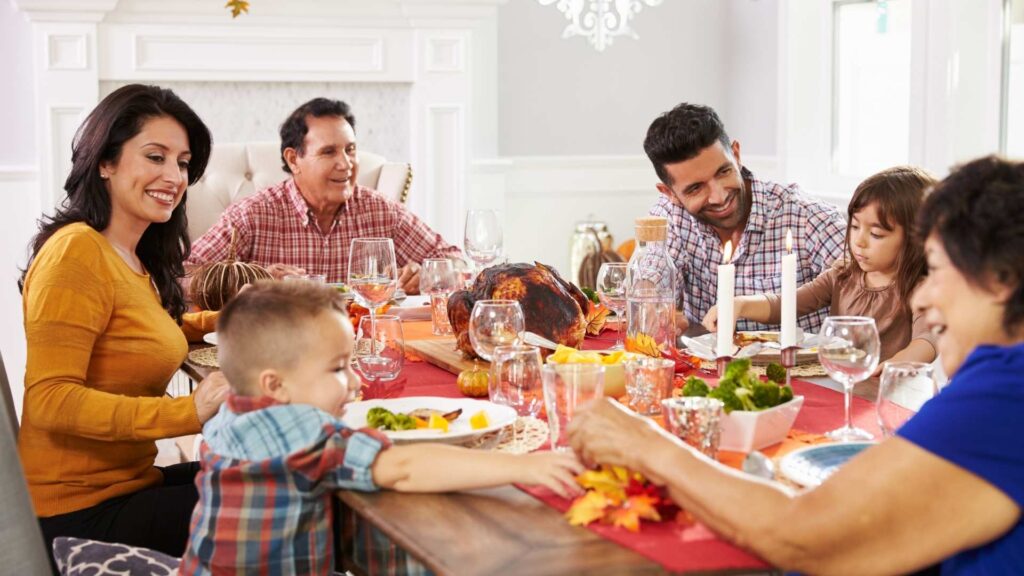Table of Contents
How to create an autism-friendly Thanksgiving for my family?
Thanksgiving is the season of gratitude, warmth, and family connection: the comforting aroma of favorite dishes, the buzz of laughter, and the joy of shared memories. Yet, for families raising a child with autism, this cherished holiday can bring a mix of excitement and anxiety.
The change in routines, bustling environments, and unfamiliar foods may create sensory challenges that make participation difficult for neurodiverse individuals and their caregivers.
The good news is that with thoughtful preparation, it’s entirely possible to enjoy an autism-friendly Thanksgiving where every family member feels calm, included, and connected. This guide, brought to you by ABA Centers of Pennsylvania, offers compassionate insights and practical strategies for hosting or attending a Thanksgiving with autism that embraces both celebration and comfort.
Why Thanksgiving Can Feel Overwhelming for Children with Autism
According to Frontiers in Psychiatry, nearly 90% of individuals with autism experience sensory sensitivities. During Thanksgiving, multiple sensory, social, and emotional triggers combine — from loud gatherings to unfamiliar smells — often overwhelming the nervous system. This is also known as sensory overload.
Unexpected Routine Changes
For children with autism, structure provides security. Sudden shifts like eating at different times, different food, visiting relatives, or adjusting bedtime can feel disorienting. These disruptions can lead to anxiety or emotional distress, especially when predictability fades.
Sensory Overload
The clatter of dishes, scent of food, bright decorations, and loud laughter can overstimulate children sensitive to sensory input. Understanding these sensory experiences is vital to creating an autism-friendly Thanksgiving that respects comfort and boundaries.
Social Demands
Holiday gatherings often mean meeting many people, receiving hugs, kisses, and maintaining eye contact; interactions that can feel completely overwhelming. Helping family members understand these sensitivities ensures more supportive and inclusive social experiences.
New Environments and Foods
New places, textures, or foods may increase anxiety. A child might prefer familiar meals or need extra encouragement to explore new tastes gradually.
Making possible a Thanksgiving with autism that prioritizes calmness and comfort can transform these challenges into opportunities for connection and growth.
Preparing for an Autism-Friendly Thanksgiving: 6 Tips for Families and Caregivers

Talk About Thanksgiving in Advance
Explain what Thanksgiving is, who will attend, and what to expect. Using social stories, visual schedules, and photos from past celebrations can help reduce uncertainty and promote understanding.
Maintain Routines Whenever Possible
Even small elements of routine — like consistent meals or nap times — help a child feel grounded during a Thanksgiving with autism.
Use Predictable Transitions
Countdowns or visual timers can prepare children for upcoming changes (e.g., “Dinner will start in 10 minutes”). These cues support emotional regulation and comfort.
Preview the Environment
If you’re celebrating at a relative’s home, show photos or videos of the space ahead of time. Familiarity helps reduce anxiety on the big day.
Practice Holiday Activities
Rehearse setting the table, tasting certain foods, or greeting relatives. These small steps build familiarity and confidence before the event.
Communicate with Family Members
Let others know about your child’s needs, like preferring high-fives instead of hugs, using headphones, or needing breaks. Clear communication creates understanding and prevents stress.
You don’t need a perfect execution; only a clear, compassionate plan. When relatives understand the “why,” they usually become partners in creating a Thanksgiving with autism that feels inclusive.
Designing a Calm and Autism-Friendly Thanksgiving Space
Hosting or visiting? Either way, we all can agree that every autism-friendly Thanksgiving benefits from a designated calm area where your child can relax and reset. Here are the most valuable suggestions to guarantee a successful Holiday for you and your child:
If you’re hosting:
- Control the environment: Lower TV volume, reduce background music, and dim bright lights. This action is the most straightforward path to an autism-friendly Thanksgiving at home.
- Create a predictable flow: Post a whiteboard schedule. Announce transitions: “We’ll eat in 10 minutes,” “We’ll start the gratitude activity in 5.”
- Stage a sensory toolkit: Headphones, chewy jewelry, fidget items, a weighted blanket—keep these visible, not hidden, so the child doesn’t feel singled out.
If you’re visiting:
- Ask for a quiet corner: A guest room or low-traffic hallway becomes a “reset zone.”
- Pack familiarity: Bring a small fan for white noise, preferred utensils, or a favorite plate. These comforts turn a new space into an autism-friendly Thanksgiving sanctuary.
- Plan exits: Take two cars or agree on a “we may leave early” option. A planned exit preserves dignity and calm during a Thanksgiving with autism.
There’s power in choosing the setting that gives your family the best shot at success, especially for your first truly autism-friendly Thanksgiving.
Celebrating Gratitude in Every Form
Gratitude looks different for everyone. A child with autism may express thankfulness through a smile, drawing, or simply spending time with loved ones. Encourage authentic expressions of appreciation — from crafting a “thankful” art project to creating a gratitude jar.

In Pennsylvania, families come together across Bala Cynwyd, Horsham, Langhorne, and Wayne to celebrate love and connection in unique ways. An autism-friendly Thanksgiving ensures every voice and every feeling has a place at the table.
How ABA Therapy Supports an Autism-Friendly Thanksgiving
Applied Behavior Analysis (ABA) gives families practical tools for communication, emotional regulation, and life skills that carry into celebrations. Therapists can help your child:
- Build communication (requesting breaks, refusing politely, asking for help)
- Practice coping (breathing, movement breaks, sensory strategies)
- Rehearse social moments (greetings, taking turns, saying “no thanks” to food)
- Generalize skills from therapy to real-life events like an autism-friendly Thanksgiving
At ABA Centers of Pennsylvania, we create personalized ABA therapy programs designed to help children thrive in real-world situations, including holidays and family events. Our team supports children and families with care rooted in science, compassion, and understanding.
Whether your child needs help managing sensory sensitivities or building social confidence, our therapists are here to guide you every step of the way.
Ready to create a calm, joyful, and autism-friendly Thanksgiving this year?
Schedule a free consultation with our autism experts by clicking here or calling us at (844) 444-7496 to learn how ABA therapy can empower your family during the holidays and beyond.








